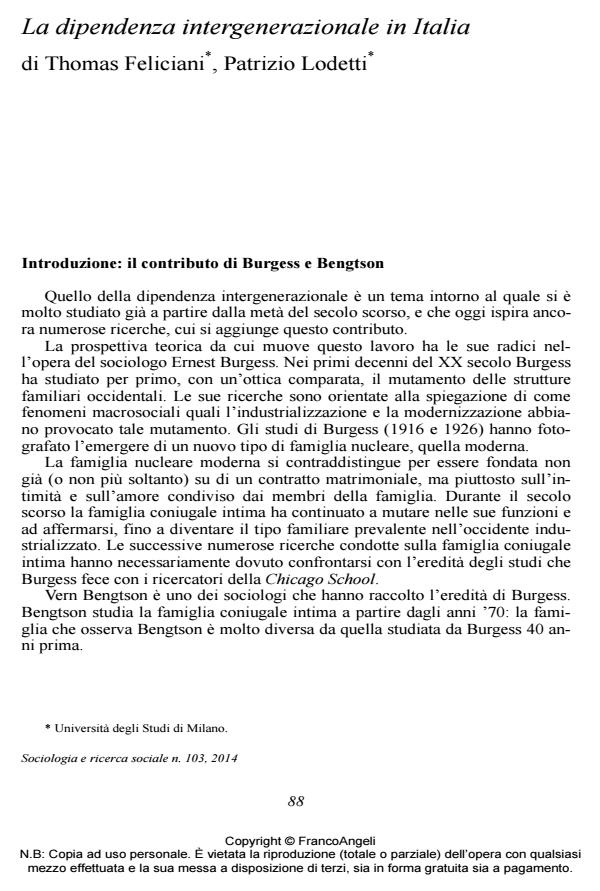La dipendenza intergenerazionale in Italia
Titolo Rivista SOCIOLOGIA E RICERCA SOCIALE
Autori/Curatori Thomas Feliciani, Patrizio Lodetti
Anno di pubblicazione 2014 Fascicolo 2014/103
Lingua Italiano Numero pagine 25 P. 88-112 Dimensione file 249 KB
DOI 10.3280/SR2014-103005
Il DOI è il codice a barre della proprietà intellettuale: per saperne di più
clicca qui
Qui sotto puoi vedere in anteprima la prima pagina di questo articolo.
Se questo articolo ti interessa, lo puoi acquistare (e scaricare in formato pdf) seguendo le facili indicazioni per acquistare il download credit. Acquista Download Credits per scaricare questo Articolo in formato PDF

FrancoAngeli è membro della Publishers International Linking Association, Inc (PILA)associazione indipendente e non profit per facilitare (attraverso i servizi tecnologici implementati da CrossRef.org) l’accesso degli studiosi ai contenuti digitali nelle pubblicazioni professionali e scientifiche
This study is developed within Vern L. Bengtson’s theoretical framework: the western modernization process causes changes to the family’s nuclear structure. One of these changes is the rise of vulnerability concerning two generations, the oldest and the youngest ones, which results in increased intergenerational dependency. This paper aims to determine whether this theoretical approach applies to Italy’s current scenarios. A secondary analysis was carried out on several indicators, including measures of vulnerability and intergenerational dependency. Effects of growing interdependence on the distribution of workload in families will be discussed. The data considered supports the validity of Bengtson’s theory.
Thomas Feliciani, Patrizio Lodetti, La dipendenza intergenerazionale in Italia in "SOCIOLOGIA E RICERCA SOCIALE " 103/2014, pp 88-112, DOI: 10.3280/SR2014-103005